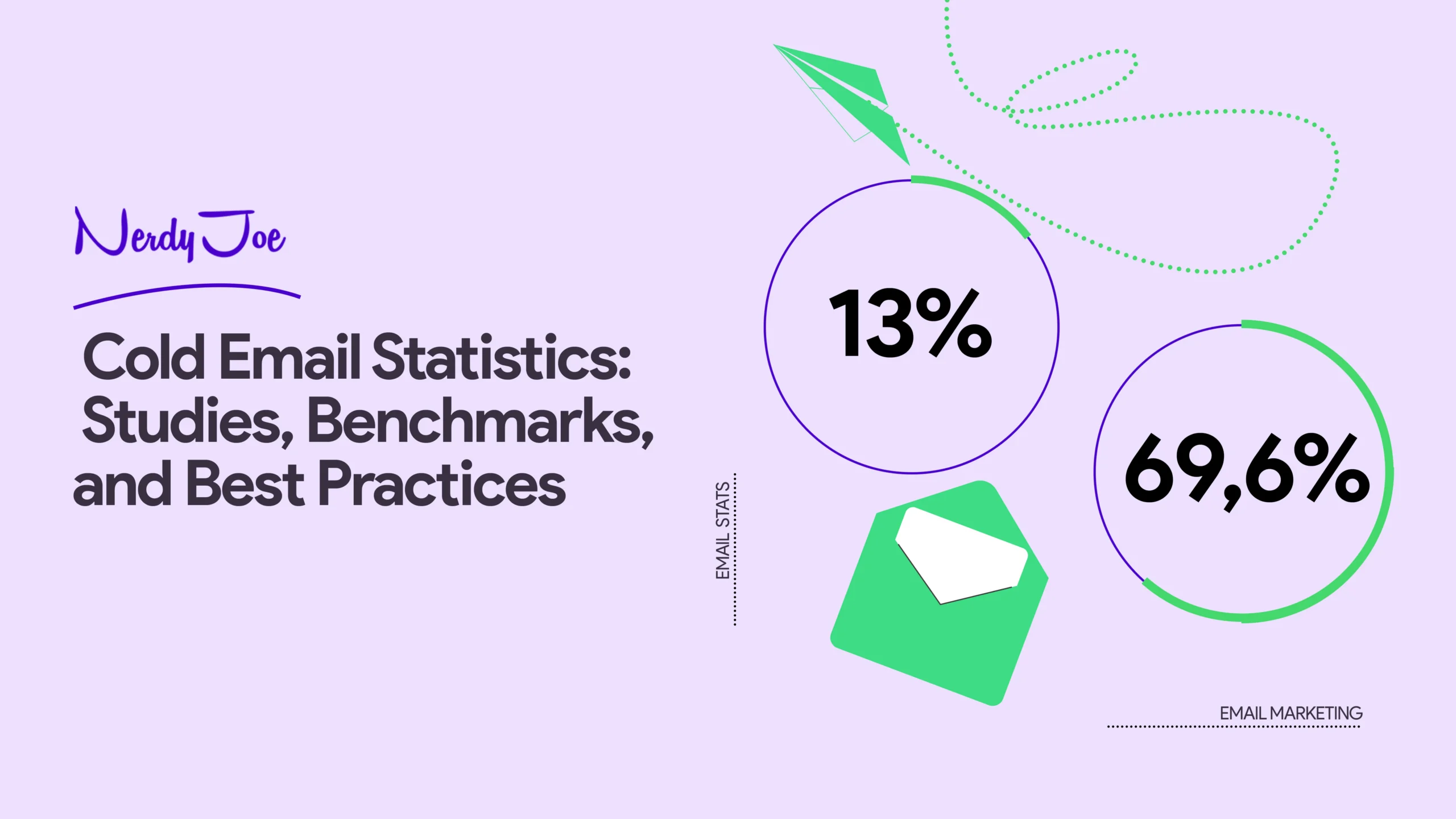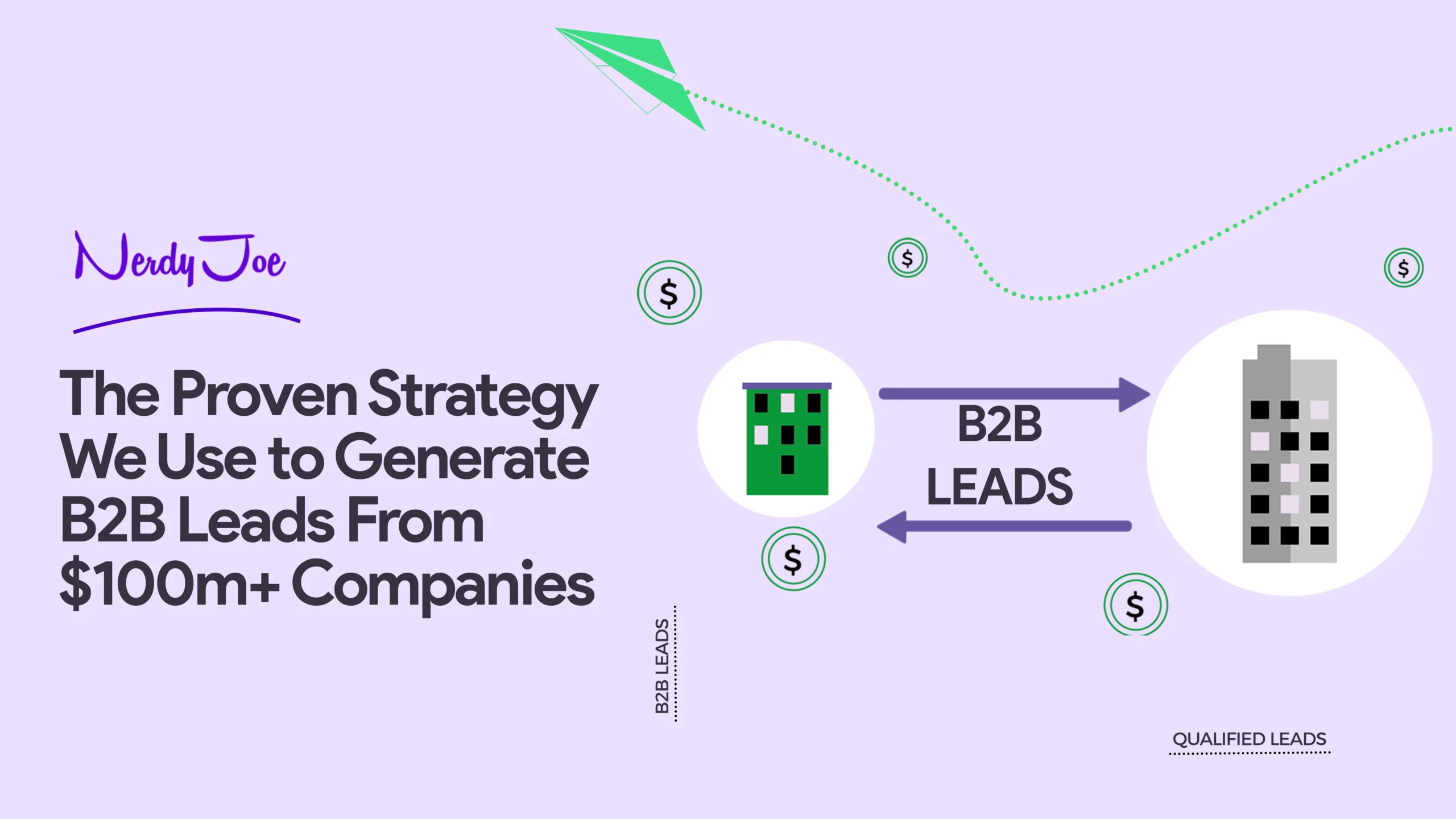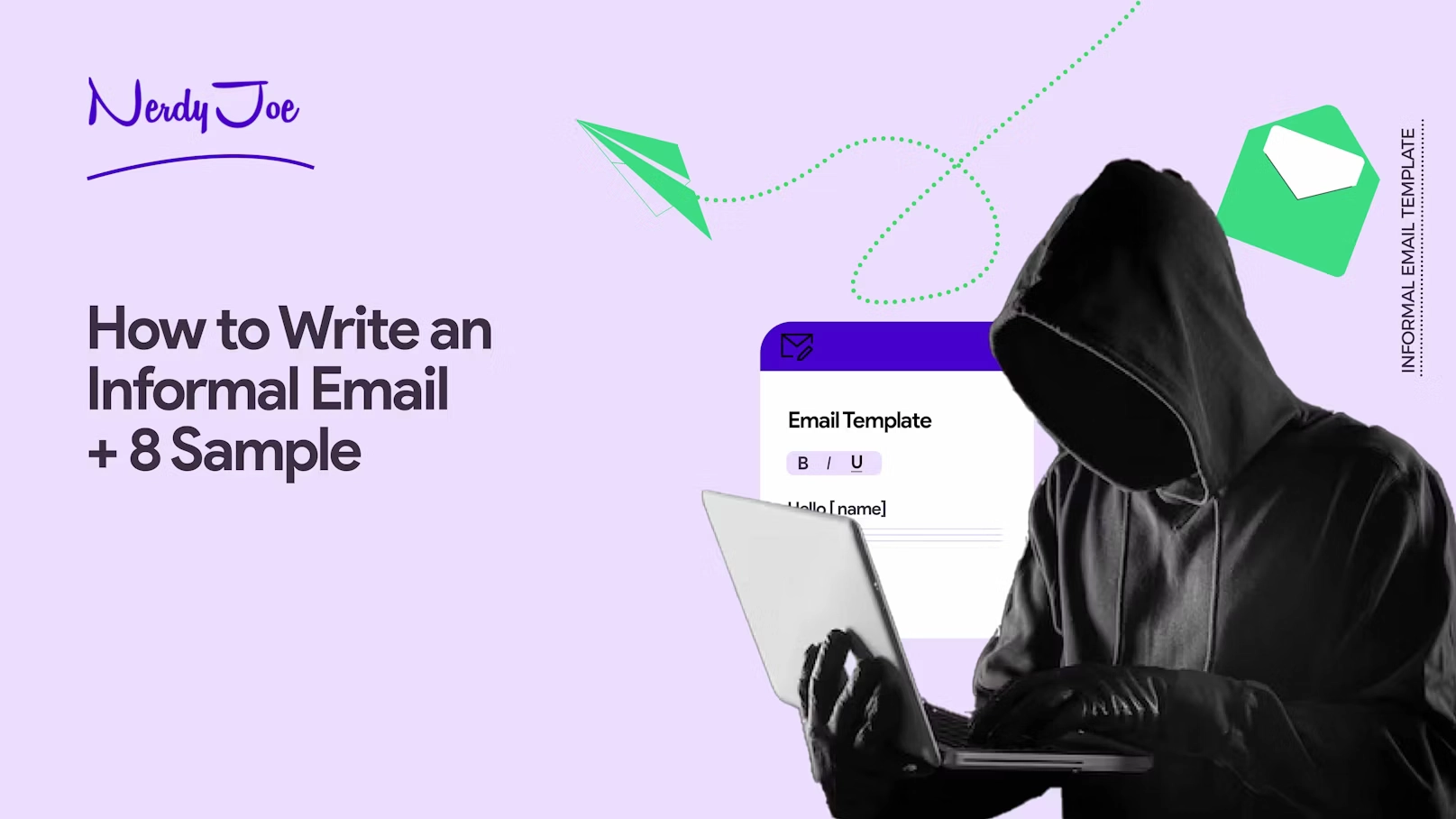Cold emailing can be a powerful tool for businesses looking to reach new customers or clients, but it can also be a tricky and time-consuming process.
Every marketer has their perspective of what works and what might not work. But figures don’t lie.
Before launching cold email campaigns, it’s important to understand the key statistics and trends that can impact the success of these emails.
These figures can inform you on what to expect and what success could look like.
In this article, we’ll dive into the key cold email statistics that businesses need to know in order to craft effective and successful campaigns.
40+ cold email statistics, benchmarks, and trends to keep an eye out on
On average, the open rate for cold emails is around 15.22% to 28.46% (Source: Writecream.com)
This might appear low to you. But here is why it makes sense.
First, cold emails are typically unsolicited, meaning that the recipient did not specifically request to receive the email. They don’t know about you, your business, or your product so there won’t be any brand recall — you are a stranger.
This can make it more challenging to get the recipient’s attention, as they may not be expecting or interested in the email.
Second, the subject line of the cold email is often the first and only chance to grab the recipient’s attention and convince them to open the email. If the subject line is not compelling or relevant, the recipient may simply delete the email without opening it.
Finally, the quality of the email list can also impact the open rate. If the list is not up-to-date or contains invalid or inactive email addresses, the open rate will likely be lower.
The average cold email click-through rate is around 2-5% (Source: Quickmail.io)
QuickMail analyzed 65 million cold email campaigns and realized that the average CTR for cold emails is around 3.67%, which is lower than the CTR for other types of emails such as newsletters or transactional emails.
The first reason for this is that cold email campaigns are unsolicited, which is why it can make sense that people don’t want to click through links in emails they didn’t ask for.
That aside, the content of the email and the value proposition must be compelling enough to convince the recipient to take action.
If the email does not clearly articulate the benefits of clicking on the link or does not offer a strong enough incentive, the CTR will likely be lower.
The quality of the email list can also impact the CTR. If the list is not up-to-date or contains invalid or inactive email addresses, the CTR will likely be lower.
The average cold email response rate for is around 8.5% (Source: Backlinko.com)
Cold email responses are notably low most of the time. If you’ve ever tried cold emailing, you know it’s hard to get people to reply to your cold emails.
According to Backlinko research on cold email response rates, a targeted cold email campaign has an average response rate of 8.5%.
Here are a few reasons why this can make sense.
In most cases, the cold nature of the email makes it challenging to get the recipient’s attention and convince them to take action.
Also, average cold emails targeting thousands of people won’t cut it. The content of the cold email and the call to action must be compelling enough to convince the recipient to take action.
And if the cold email does not clearly articulate the benefits of taking action or does not offer a strong enough incentive, the average response rate will likely be lower.
The email list quality also comes into play here. Invalid or inactive email addresses or a non-up-to-date list will likely result in a lower response rate.
Personalization can increase cold email open rates by up to 50% (Source: Woodpecker.co)
Personalization means the extra work that will make your cold emails more effective.
According to Woodpecker, personalization can increase cold email open rates by up to 50% — which makes sense because the reason why it works so perfectly is simple.
Personalizing your cold email helps make it more relevant to the recipient. Also, with personalization, you can tailor the cold email to their interests and needs, which can make it more appealing and engaging.
It makes them feel that the cold email is directed specifically at them (only), and they are more likely to be interested in the content.
In addition, personalization can also help to build trust and credibility with the recipient, which can increase the chances that they will open the email.
When an email is personalized, the recipient is more likely to feel that the sender has taken the time to understand their needs and is more likely to trust the content of the email.
Using a personalized subject line can increase open rates by up to 35.9% (Source: Klenty.com)
Personalizing your cold email subject line and making it relevant to the recipient is key to boosting your open rates.
According to data from Klenty, personalized cold email subject lines can increase open rates by up to 35.9%.
Personalizing the subject line works in the same way as customizing the actual cold email. It makes your prospects feel valued and helps to get them to trust you. It makes them want to discover what you have to say and as a result, they open the cold email.
The best time to send cold emails is generally during the workweek, with the highest response rates on Tuesdays and Wednesdays (Source: Woodpecker.co)
We’ve proven this at Nerdy Joe as well. The best days to send cold emails are Tuesdays and Wednesdays.
First, people are more likely to be at their desks and checking their email during the workweek, rather than on weekends or holidays.
This means that there is a higher chance that your cold email will be seen and read if you send it during the workweek.
Also, Tuesdays and Wednesdays are generally considered the most productive days of the week.
People are likely to be more focused and energized at the beginning of the week, and less likely to be burnt out or distracted by the end of the week.
As a result, they may be more likely to respond to a cold email on Tuesday or Wednesday than on other days of the week.
On top of that, sending a cold email at the beginning of the week allows the recipient more time to follow up or schedule a meeting during the week, rather than waiting until the end of the week or the following week.
This can help to ensure that your email doesn’t get lost in the shuffle or forgotten about.
[DatoCMS Block #63994107]
Short and concise emails tend to have higher response rates than longer ones (Source: Boomerang.com)
In an exhaustive study involving over 40 million emails, Boomerang (a software platform that syncs with Gmail) determined which factors led to getting responses.
It was found that word count is strongly correlated with response rate.
On average, emails that are short (but not too short) receive the highest response rate. Emails with 75 to 100 words had the highest response rate (51%).
Things are so for several reasons.
People are generally very busy and may not have the time or inclination to read through long cold emails — especially since they didn’t sign up for them.
Short and concise emails are easier to read and take less time to get through, which makes them more appealing to busy executives.
On top of that, shorter emails are often more focused and to-the-point, which can make them more effective at conveying their message.
At the same time, longer cold emails make it difficult for recipients to understand the main points or action items, which can lead to confusion or a lack of response.
Also, shorter cold emails are less likely to contain unnecessary or extraneous information, which can make them more relevant and valuable to the recipient.
Using a clear call-to-action can increase response rates by up to 371% and and Sales 1617% (Source: Wordstream.com)
Using a clear call-to-action (CTA) in an email can increase response rates by up to 371% because it gives the recipient a specific action to take after reading the email.
Without a CTA, the recipient may not know what to do next or may not feel motivated to take any action at all.
A CTA can be as simple as asking the recipient to reply to the email, visit a website, or schedule a meeting.
It should be clearly stated and easy to understand, and it should be relevant to the purpose of the email.
For example, if you are sending a cold email to a potential client, your CTA might be to schedule a meeting or a call to discuss the potential for working together.
Specifying and urging the prospect to follow it gets them clear on the next step.
How do cold email open and click-through rates compare to other types of emails?
Cold email open and click-through rates can be lower than those of warm emails (emails sent to contacts who have already expressed interest in the company or its products) or transactional emails (emails related to a specific transaction or interaction with the company).
This is because recipients may be more familiar with and trust the sender of warm or transactional emails, making them more likely to open and engage with the email.
They’ve already established some sort of relationship with the recipient and it makes them more receptive to the sender’s email.
At the same time, cold emails come in unsolicited and at a disadvantage. It takes strategic thinking and smart targeting to cold emails to work, and most people are terrible at it.
That’s why cold emails don’t generally perform as well as the other types of emails.
However, there are a few factors that can impact the average click through rate and open rate for all types of emails.
For example, the sender’s reputation (as determined by their domain and IP address) can affect whether the email is delivered to the recipient’s inbox or sent to their spam folder.
The relevance of the email to the recipient is also important, as emails that are not of interest to the recipient are less likely to be opened or clicked on.
What are the best practices for writing cold emails?
Crafting a compelling cold email requires some careful thought and attention to detail. Here are a few best practices to keep in mind:
Shoot for cold email sequences
First, cold email sequences give more flexibility and better chances to make a good case for yourself in the campaign.
Also, a Woodpecker study revealed that sending 4-7 emails in each sequence as opposed to just 1-3 emails triples the response rate.
They also found that longer campaigns have seen 27% reply rates as to 9% for shorter ones.
Create clear, compelling subject lines
The subject line is the first thing the recipient will see, so it’s important to make it as compelling as possible.
Avoid spammy words, misleading, and long subject lines, and try to include specific details about what the recipient will get out of reading the email.
Personalized subject lines always work best.
Here are some cold email subject line statistics you will need to keep in mind.
- Using the recipient’s first name in the subject line can increase open rates by up to 41% (Source: ConstantContact.com)
- Using a subject line that is less than 50 characters long can increase open rates by up to 59% (Source: Uplandsoftware.com)
- Using a subject line that is vague or unrelated to the email content can decrease open rates (Source: Nerdy Joe)
- Using a subject line that includes a number or statistic can increase open rates by up to 22% (Source: Woodpecker.co)
- Using a subject line that includes a question can increase open rates by up to 13% (Source: Woodpecker.co)
- Using a subject line that includes a sense of exclusivity or scarcity can increase open rates by up to 9% (Source: Woodpecker.co)
- Using a subject line that includes a sense of curiosity or mystery can increase open rates by up to 7% (Source: Woodpecker.co)
- Using a subject line that includes a sense of humor can increase open rates by up to 5% (Source: Woodpecker.co)
Keep the message concise and to the point
No one wants to read a long, rambling email, so keep your message as brief and focused as possible.
Use bullet points or numbered lists to make the email easy to scan, and get to the point quickly.
Personalize the email
As mentioned earlier, personalized emails with the recipient’s name and their specific needs or interests can increase the chances of a response.
Be sure to do your research and tailor the email to the specific recipient.
Use buttons based CTAs
Button-based CTAs make it easier for your prospects to see and click on them. They’re more fun and they easily catch the attention of the recipients.
According to Campaign Monitor research, button-based CTAs improved click-through rates by 127%.
Follow up
It’s not uncommon for cold emails to go unopened or ignored, so don’t be afraid to follow up.
Your prospect could simply be busy or maybe your cold email just came in at the not-right-time.
According to a Backlinko study, sending multiple follow-ups can double your response rate.
Just be sure to wait a few days and craft a new, compelling subject line for the follow-up email.
Key takeaways
- Overall, cold emailing can be a powerful tool for businesses looking to expand their reach and find new customers, as long as it’s done in a respectful and professional manner.
- While cold emailing can be an effective way to reach out to potential customers or clients, it’s important to make sure you’re following best practices and not spamming or harassing recipients. Also, cold emailing triggered campaigns can be an effective way to automate your cold email sequence.
- The global average open rate and the general cold email statistics may seem low to you, but still, targeted cold emails is the most effective way to reach out to potential customers or clients.
- A/B testing can help you optimize your cold email campaigns by allowing you to compare different subject lines, email bodies, and other variables to determine which ones are most effective.


![How to Generate B2B Leads With Cold Outreach [Case Study]](https://nerdyjoe.com/wp-content/uploads/2024/06/1669218674-artboard-1-copie-4-3x-1-scaled.webp)
